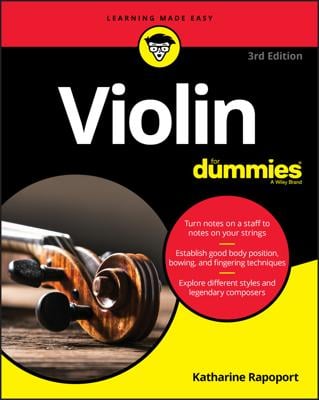Take a (violin) bow and let your inner musician shine!
You don’t have to be a genius to start fiddling around! Violin For Dummies helps budding violinists of all ages begin to play. If you’ve never read a note of music, this book will show you how to turn those little black dots into beautiful notes. Start slow as you learn how to hold the instrument, use the bow, finger notes, and play in tune. Watch yourself blossom into a musician with tips on technique and style. When you’re ready to go further, this book will help you find the people and resources that can help you get just a little closer to virtuoso!
Your own private lessons are right inside this book, with the included online video and audio instruction, plus recordings that will help you develop your “ear.” This book takes the guesswork out of learning an instrument, so you’ll be ready to join the band when the time comes!
- Choose a violin and learn the basics of holding the instrument and playing notes
- Start reading music with this fast-and-easy introduction to musical notation
- Improve your musicianship and start to play in groups
- Explore different music styles and legendary violin composers
The violin is a beautiful thing—adding melody everywhere from orchestras to folk and pop tunes. With Violin For Dummies, you can make the music your own, even if you’re a total music beginner.
Take a (violin) bow and let your inner musician shine!
You don’t have to be a genius to start fiddling around! Violin For Dummies helps budding violinists of all ages begin to play. If you’ve never read a note of music, this book will show you how to turn those little black dots into beautiful notes. Start slow as you learn how to hold the instrument, use the bow, finger notes, and play in tune. Watch yourself blossom into a musician with tips on technique and style. When you’re ready to go further, this book will help you find the people and resources that can help you get just a little closer to virtuoso!
Your own private lessons are right inside this book, with the included online video and
- Choose a violin and learn the basics of holding the instrument and playing notes
- Start reading music with this fast-and-easy introduction to musical notation
- Improve your musicianship and start to play in groups
- Explore different music styles and legendary violin composers
The violin is a beautiful thing—adding melody everywhere from orchestras to folk and pop tunes. With Violin For Dummies, you can make the music your own, even if you’re a total music beginner.

